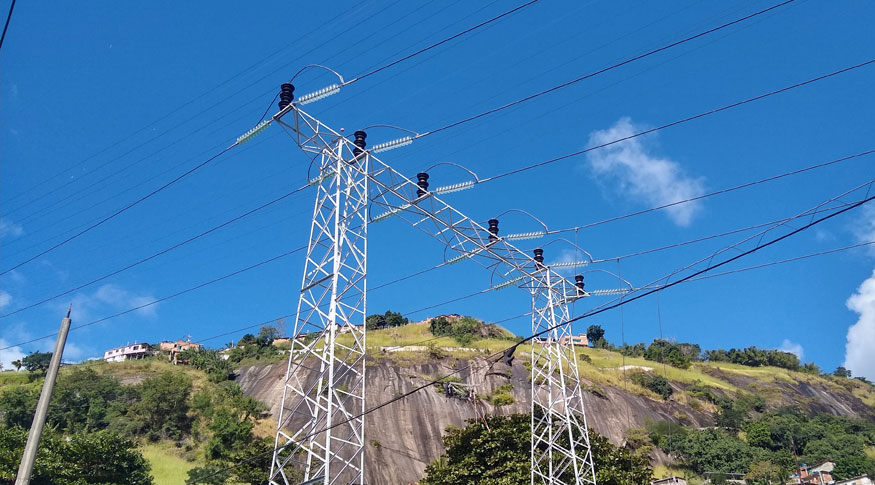IPCA
Inflation stays at 0.53% in June, pressed by rise in electricity
July 08, 2021 09h00 AM | Last Updated: July 08, 2021 03h40 PM

Inflation decelerated to 0.53% in June, after registering 0.83% in the previous month. This is the highest figure for June since 2018 (1.26%). As a result, the index accrues a rise of 3.77% in the year and of 8.35% in the last 12 months. The cumulative change in 12 months is the highest one since September 2016 (8.48%). In June 2020, the monthly rate had been 0.26%. The data are from the Extended National Consumer Price Index - IPCA, released today (8) by the IBGE.
Of the nine groups of products and services surveyed, eight rose in June. The biggest impact (0.17 p.p.) came from the group of housing (1.10%), mainly due to electricity (1.95%). Although it decelerated in relation to the previous month (5.37%), electricity fare exerted the major individual impact on the month´s index (0.09 p.p.).
“Energy continued to rise mainly due to the red tariff flag level 2, which came into force in June and adds R$6.243 to the electricity fare at each 100 kilowatt-hour consumed. The red tariff flag level 1 was in force in May, adding less to the electricity fare (R$4.169). However, the prices decelerated in June due to a number of adjustments captured in the places surveyed in May. In June, we had only the average adjustment of 8.97% in the end of the month in Curitiba,” explains André Filipe Guedes Almeida, an analyst of the survey.
It was followed by food and beverages (0.43%) and transportation (0.41%), both of them exerting the second biggest impact on the index (0.09 p.p.). Food at home changed from 0.23% in May to 0.33% in June, pressed by meat (1.32%), which rose for the fifth consecutive month and accrued a rise of 38.17% in 12 months. On the dropping side, the highlights are potatoes (-15.38%), onions (-13.70%), tomatoes (-9.35%) and fruits (-2.69%).
Food away from home (0.66%) decelerated in relation to May (0.98%), mainly due to snacks (0.24%), whose prices had risen 2.10% in the previous month. Meals grew 0.85%, whereas it had risen 0.63% in May.
In the group of transportation (0.41%), fuels increased 0.87% and accrue a rise 43.92% in the last 12 months. Once again, the major impact (0.04 p.p.) came from gasoline (0.69%), whose prices had risen 2.87% in May. The prices of ethanol (2.14%), diesel fuel (1.10%) and vehicular gas (0.16%) also rose in June.
In public transportation (–0.61%), metro fare (1.76%) was adjusted in Rio de Janeiro (5.65%) - an increase of 16%, valid since May 11 - and intercity bus (0.34%) in Salvador (4.88%), an increase of 6.80% since June 1st. On the dropping side, the reduction in the airfare prices (-5.57%) stood out, impacting -0.02 p.p. on the month´s index.
Among the major groups, the highest change in the month was in wearing apparel (1.21%), highlighted by footwear and accessories (1.53%), men’s wearing apparel (1.52%) and women’s wearing apparel (1.10%). All those items accelerated over May. The other groups stood between the drop of 0.12% in Communication and the rise of 1.09% in Household articles.
In June, all the areas surveyed recorded inflation. The highest index was in the metropolitan area of Recife (0.92%), influenced by the rise in the prices of gasoline (4.92%) and electricity (2.78%). The lowest result was reported in Brasília (0.17%), due to the drop in the prices of fruits (-7.53%) and water and sewage fees (–2.40%).
INPC decelerates to 0.60% in June
The National Consumer Price Index (INPC) also decelerated to 0.60% in June, standing below the May´s figure (0.96%). The cumulative index in the year stayed at 3.95% and, in the last 12 months, at 9.22%, above the rate of 8.90% registered in the 12 immediately previous months. The cumulative change in 12 months is the highest one since August 2016 (9.62%). In June 2020, the rate had been 0.30%.
“Electricity, due to the change in the tariff flag, food and beverages and transportation also influenced the June´s INPC,” said Almeida, noticing that food products rose 0.47%, standing below the May´s figure (0.53%). Non-food products rose 0.64%, whereas they had registered 1.10% in May.
All the areas rose in June. The metropolitan areas of Recife and Salvador changed 0.90%. Both areas were influenced by electricity (2.85% in Recife and 2.53% in Salvador) and by gasoline (4.92% in Recife and 2.22% in Salvador). The lowest index was reported in Brasília (0.14%), due to the drop in the prices of fruits (-6.83%) and of water and sewage fees (-1.71%).
More about the survey
The National System of Consumer Price Indexes (SNIPC) produces the IPCA, which aims at measuring the inflation of a whole set of products and services traded in the retail, related to the consumption of households.
The IPCA encompasses households with earnings between 1 and 40 minimum wages, whereas the INPC, households with earnings between 1 and 5 minimum wages, living in the metropolitan areas of Belém, Fortaleza, Recife, Salvador, Belo Horizonte, Vitória, Rio de Janeiro, São Paulo, Curitiba, Porto Alegre, as well as in the Federal District and in the municipalities of Goiânia, Campo Grande, Rio Branco, São Luís and Aracaju. Please access the data at Sidra.



















